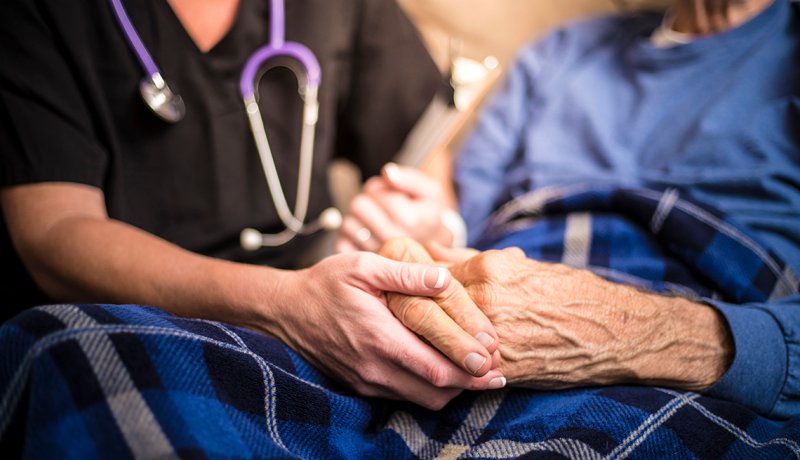AARP Hearing Center

South Carolina is bearing the brunt of the country’s COVID-19 crisis in nursing homes, reporting the highest COVID-19 death rate among residents of any state, according to an exclusive new AARP analysis of recent government data.
An average of 1.2 COVID-19 deaths per 100 residents was reported in the state between late August and late September, the analysis shows. That's more than double the national average of 0.48 per 100 residents. South Carolina nursing homes reported a total of 172 COVID-19 deaths among residents over the four-week period, which made up 25 percent of the state’s overall COVID-19 deaths. Since June, nursing home residents have consistently accounted for around a quarter of the state’s COVID-19 deaths.
Closely aligning with the high death count was the high rate of COVID-19 infections among nursing homes residents. The state reported 823 resident cases and 5.8 infections per 100 residents, which constituted the second-highest infection rate among residents in the country — more than double the national average. Only Arkansas reported a higher rate.
Teresa Arnold, state director of AARP’s South Carolina office, describes the results as “tragic” and “a startling wake-up call for us.”
“We will be delving into this data to find out exactly what is going on and how we can advocate for nursing home residents and the caregivers who are so concerned for them,” she says.
Alongside having the highest resident death rate in the country, and almost having the highest case rate among residents, South Carolina also tracked above the national average in the other three categories measured in the analysis: staff COVID-19 cases, personal protective equipment (PPE) supply and staff shortages. It was one of only five states, alongside Alabama, Kansas, North Carolina and Tennessee, to track above the national average in all five categories.
While there were more resident cases than staff cases — 823 and 582, respectively — staff cases were reported in more than two-thirds of South Carolinian nursing homes, meaning they are more widespread than resident cases, which appeared in 43 percent of homes. Studies show that infected staff are one of the greatest drivers of infections among residents.
Given these high COVID-19 infection rates in South Carolina’s nursing homes, the lack of sufficient PPE and staff reported in over a third of these nursing homes creates even more cause for alarm. PPE helps stop the transfer of infectious droplets through the air, while adequate staffing ratios mean better care and less person-to-person contact. Without sufficient levels of both, the spread of COVID-19 among nursing home residents, who are generally older adults with underlying conditions and therefore at increased risk of infection and severe illness from the disease, is more likely.
Read South Carolina's full results here.
The analysis, conducted by AARP's Public Policy Institute and the Scripps Gerontology Center at Miami University in Ohio, draws primarily on data acquired from the Nursing Home COVID-19 Public File by the Centers for Medicare and Medicaid Services (CMS). Nursing homes are federally certified and required to submit data to the government each week. The AARP analysis uses data from Aug. 24 to Sept. 20, in which 95 percent of the nation’s 15,366 nursing homes submitted data for all four weeks. The analysis only captures data from federally certified nursing homes, not all long-term facilities, as some other tallies do. Going forward, AARP plans to release a new analysis on these five topics each month, as new federal data become available.































































